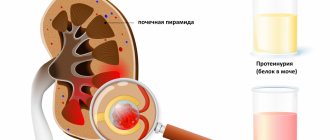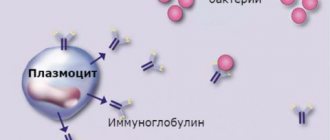General principles of inheritance of characters.
Simply put, every trait in the body (hair color, eye color, blood type, Rh factor) is encoded by two genes.
In reality, the number of genes that determine the trait is much greater. For each trait, the child receives one gene from the mother, another from the father. In genetics, dominant and recessive genes are distinguished. The dominant gene is designated by a capital letter of the Latin alphabet, and in its presence the recessive gene, as a rule, does not manifest its properties. A recessive gene is indicated by a capital letter of the Latin alphabet. If for some trait an organism contains two identical genes (two recessive or two dominant), then it is called homozygous for this trait. If an organism contains one dominant and one recessive gene, then it is called heterozygous for this trait, and at the same time those properties of the trait that are encoded by the dominant gene are manifested. For example: A is a dominant gene that determines brown eye color and A is a recessive gene that determines blue eye color
Possible genotype options: AA - homozygote, brown eyes Aa - heterozygote, brown eyes aa - homozygote, blue eyes
Example 1:
wife AA - homozygous, brown eyes, both genes are dominant; husband AA - homozygous, blue eyes, both genes are recessive
When germ cells (egg and sperm) are formed, one gene goes into each germ cell (gamete), i.e. in this case, the female body forms two gametes containing one dominant gene each, and the male body forms two gametes containing one recessive gene each. When germ cells merge, the embryo receives one maternal and one paternal gene for this trait.
wife AA + husband aa Gametes: A A a a Child: Aa Aa Aa Aa
Thus, in this situation, 100% of the children will have brown eyes and be heterozygotes for this trait.
Example 2:
wife Aa - heterozygote, brown eyes husband Aa - heterozygote, brown eyes wife Aa + husband Aa gametes: A a A a child: AA, Aa, Aa, aa
In this case, the probability of having children with brown eyes (homozygotes) is 25%, heterozygotes are 50% with brown eyes, and blue eyes (homozygotes) are 25%.
Example 3:
wife Aa - heterozygote, brown eyes husband aa - homozygote, blue eyes Wife Aa + husband aa Gametes: A a a a Child: Aa, Aa, aa, aa
In this case, 50% of children have brown eyes and are heterozygotes and 50% have blue eyes (homozygotes)
Blood type - what does the child inherit?
After compatibility was clarified, that is, which blood is safe to transfuse and to whom, geneticists began studying problems of inheritance. They wondered whether it was possible to calculate what blood type a baby would be born with, or at least predict the probability. For relatives, sometimes it’s just a matter of interest - what color eyes the baby will have, which of their loved ones he will resemble. And for scientists and doctors, the main task is to prevent congenital diseases.
It has been proven that just as a baby inherits the color of its eyes, skin and hair, its blood type follows the same principles. Genetic laws are quite precise, there is only a small probability of exceptions.
How to find out what blood type a child will be born with?
There are some general patterns of inheritance:
- if both parents are owners of the first blood group, then the child will be born with the same;
- if mom and dad have the first and second groups, then the children will also have either one or the other group;
- the same applies to the situation when parents have the first and third groups;
- Do mom and dad have blood type IV? Children may be born with the second, third or fourth group;
- and when parents have the second and third groups, there is a possibility of having a child with any blood type.
All these calculations are based on the teachings of Mendel, a famous geneticist. From the parents you can find out important information about the future baby. It is known that children inherit 50% of their genes from their father and 50% from their mother.
Article on the topic:
What do elevated platelets in women indicate? Causes, symptoms and treatment
Patterns of inheritance of blood group and Rh factor.
Inheritance of blood type is controlled by an autosomal gene. The locus of this gene is designated by the letter I, and its three alleles by the letters A, B and 0. Alleles A and B are equally dominant, and allele 0 is recessive to both of them. There are four blood types. The following genotypes correspond to them: First (I) 00 Second (II) AA; A0 Third (III) BB; B0 Fourth (IV) AB
Example 1:
wife has the first blood group (00) husband has the second blood group and is homozygous (AA) wife 00 + husband AA gametes: 0 0 A A child: A0 A0 A0 A0
All children have a second blood group and are heterozygotes for this trait.
Example 2:
wife has the first blood group (00) husband has the second blood group and is a heterozygote (A0) wife 00 + husband A0 gametes: 0 0 A 0 child: A0 A0 00 00
In a given family, in 50% of cases it is possible to have a child with a second blood group, and in 50% of cases the child’s blood type will be first.
Inheritance of the Rh factor is encoded by three pairs of genes and occurs independently of the inheritance of blood type. The most significant gene is designated by the Latin letter D. It can be dominant - D, or recessive - d. The genotype of a Rh-positive person can be homozygous - DD, or heterozygous - Dd. The genotype of a Rh negative person may be dd.
Example 1:
wife has a negative Rh factor (dd) husband has a positive Rh factor and is a heterozygote (Dd) wife dd + husband Dd gametes: dd D d child: Dd Dd dd dd
In a given family, the probability of having a Rh-positive child is 50% and the probability of having a Rh-negative child is also 50%.
Example 2:
wife has a negative Rh factor (dd) husband has a positive Rh factor and is homozygous for this trait (DD) wife dd + husband DD gametes: dd DD child: Dd Dd Dd Dd
In this family, the probability of having a Rh-positive child is 100%.
OAV Groups
Inheritance of OAV blood groups refers to a case of multiple allelism . Until now, we have considered cases where allelic genes were only in paired variants.
The case when genes have several (more than two) alleles is called multiple allelism .
Despite the presence of more than two allelic forms of a gene, a given diploid organism can carry only two alleles.
The OAV blood group system was discovered in 1900 by K. Landsteiner . There are four blood groups: O (I), A (II), B (III) and AB (IV). These blood groups are determined by three alleles of one gene: Ia, Ib, i. Alleles Ia and Ib are dominant relative to allele i, and equal to each other. These genes are responsible for the formation of certain antigens on the surface of red blood cells and agglutinins in the blood plasma.
Table 1. Inheritance of OAV blood groups in humans
| Blood type | Genotype | Antigens on the surface of red blood cells | Agglutinins in blood plasma |
| O(I) | ii | — | α, β |
| A (II) | Ia i or Ia Ia | A | β |
| B (III) | Ib i or Ib Ib | IN | α |
| AB (IV) | Ia Ib | A, B | — |
Based on the data given in the table, it is quite easy to explain that when a son has a second blood group, a daughter has a third, a father has a fourth blood group, and a mother has a first, then this is not a reason for jealousy and accusations.
Features of the course of pregnancy with Rh factor incompatibility. Rhesus conflict.
Hemolytic disease of the fetus and newborn is a condition that occurs as a result of incompatibility of the blood of mother and fetus for certain antigens. Most often, hemolytic disease of the newborn develops due to Rh conflict. In this case, the pregnant woman has Rh-negative blood, and the fetus has Rh-positive blood. During pregnancy, the Rh factor with the red blood cells of the Rh-positive fetus enters the blood of the Rh-negative mother and causes the formation of antibodies to the Rh factor in her blood (harmless to her, but causing the destruction of the fetal red blood cells). The breakdown of red blood cells leads to damage to the liver, kidneys, brain of the fetus, and the development of hemolytic disease of the fetus and newborn. In most cases, the disease develops quickly after birth, which is facilitated by the entry of a large number of antibodies into the baby’s blood when the integrity of the placental vessels is disrupted.
Less commonly, hemolytic disease of the newborn is caused by group incompatibility of the blood of mother and fetus (according to the AB0 system). In this case, due to agglutinogen (A or B), present in the fetal red blood cells but absent in the mother, antibodies to the fetal red blood cells are formed in the maternal blood. Most often, immune incompatibility manifests itself when the mother has blood group I, and the fetus has blood group II, and less often, blood group III.
The process of immunization of a pregnant woman begins with the formation of antigens in the red blood cells of the fetus. Since antigens of the Rh system are contained in the blood of the fetus from the 9-10th week of pregnancy, and group antigens - from the 5-6th week, in some cases early sensitization of the mother’s body is possible. The penetration of antigens into the maternal bloodstream is facilitated by infectious factors that increase the permeability of the placenta, minor injuries, hemorrhages and other damage to the placenta. As a rule, the first pregnancy in an Rh-negative woman, in the absence of previous sensitization of the body, proceeds without complications. Sensitization of the body of a Rh-negative woman is possible through transfusions of incompatible blood (carried out even in early childhood), during pregnancy and childbirth (if the fetus has Rh-positive blood), after abortions, miscarriages, and operations for ectopic pregnancy. According to the literature, after the first pregnancy, immunization occurs in 10% of women. If a woman with Rh-negative blood avoided Rh immunization after her first pregnancy, then during a subsequent pregnancy with an Rh-positive fetus, the probability of immunization again is 10%. Therefore, after any termination of pregnancy in a woman with Rh-negative blood, it is necessary to administer anti-Rhesus immunoglobulin for prophylactic purposes. During pregnancy, in a woman with Rh-negative blood, it is necessary to determine the titer of Rh antibodies in the blood over time.
Question 2:
I have a negative Rh factor. I recently had an abortion. Will I be able to have children? Is there a chance that the baby will be sick during the next pregnancy?
Answer
: The presence of a negative Rh factor does not directly affect conception. During an abortion (if it was performed at 9-10 weeks of pregnancy), there was a possibility of sensitization of the body to the Rh factor. Before a planned pregnancy, it is advisable to do a blood test for the presence of antibodies to the Rh factor.
What can happen?
The influence of blood type on conception and the absence of Rh conflict is very large. A pregnancy complicated by the presence of a rhesus conflict between the parents, if appropriate treatment is not prescribed, may be interrupted and a miscarriage may occur. Antibodies produced in the woman’s body will strive to destroy the embryo. There is even an opinion that if the blood is compatible at conception according to the Rh factor, as well as if the future father has a blood group higher than that of the mother, then the chances of a quick conception increase greatly, such blood compatibility at conception contributes to a favorable pregnancy and the birth of a strong baby .
Most of the world's population has a positive Rh factor; a negative one can be found in 10-15% of people. The development of Rh conflict occurs when a woman is Rh negative and a man is Rh positive. Even in such a situation, Rh discrepancy may not be dangerous for the health of the mother and baby; the main thing is to constantly be monitored by a specialist. In other cases, Rh conflict will not occur. Most often, such compatibility of blood groups for conception, burdened by a Rh conflict, is extremely rare (up to 3% of women).
Question 3:
What dose of anti-Rhesus immunoglobulin and in what time frame is administered to a woman with Rh-negative blood after childbirth? Is it true that the administered dose of the drug should be increased after a caesarean section?
Answer
: Women with Rh-negative blood after childbirth are given anti-Rhesus immunoglobulin in an amount of 1-1.5 ml (200-300 µg) no later than 24-48 hours after birth for prophylactic purposes. During surgical interventions, transplacental bleeding may increase, and therefore the administered dose of anti-Rhesus immunoglobulin is increased by 1.5 times.










